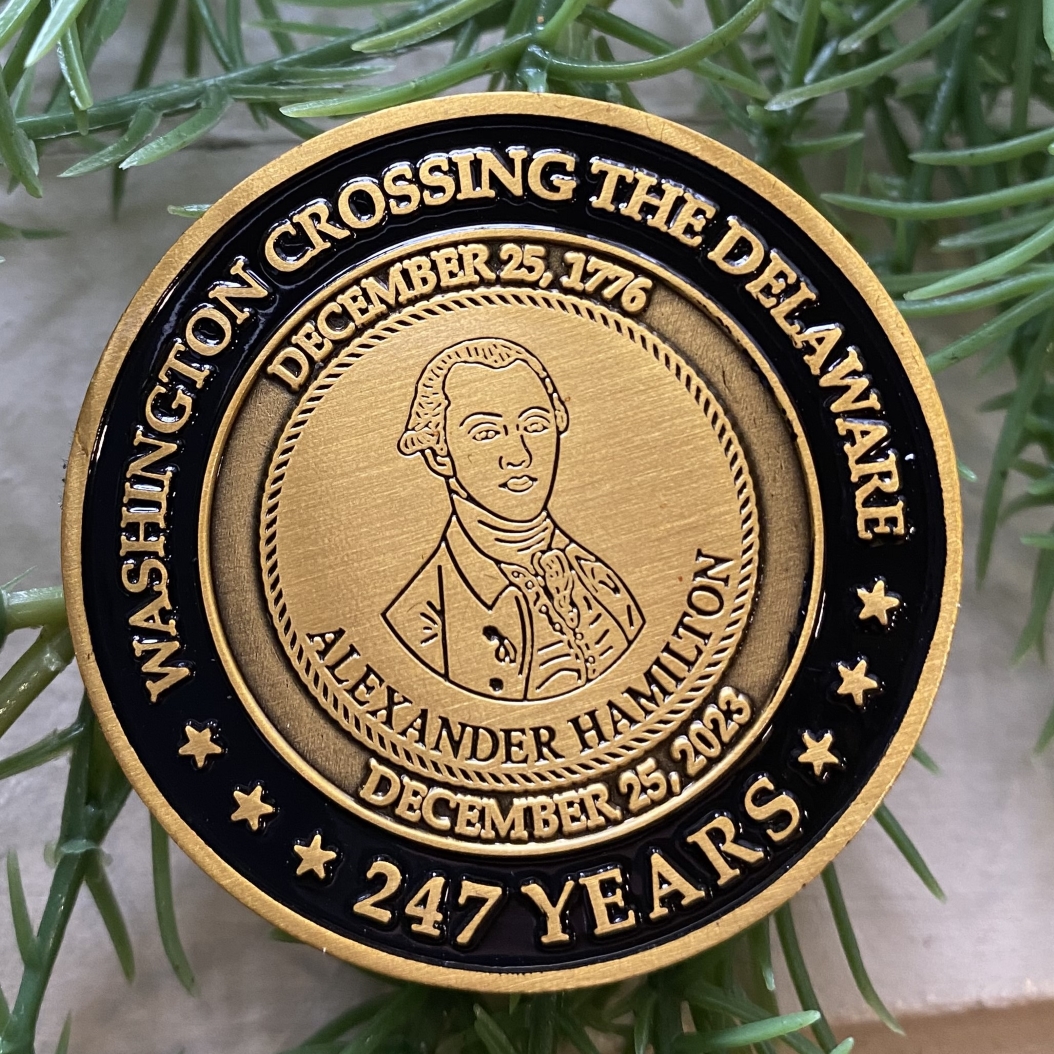Alexander Hamilton Coin Now Available
Washington Crossing Historic Park’s 2023 Challenge Coin is now available in the gift shop or in our online store. This year’s coin features Captain Alexander Hamilton, a Young Captain of the New York Provincial Company of Artillery- a small unit of 60 men that was made into an artillery company because it took possession of several British cannon.
Each year through 2026, the park will release a new challenge coin to commemorate the lead-up to the 250th anniversary of Washington’s crossing. Each coin features an important figure from the crossing on one side and a rendition of the famous Leutze painting on the other. Each year features a different person. Cost is $17.76 + shipping.
About Captain Alexander Hamilton
by Historical Interpreter David Price
The 2024 challenge coin issued by The Friends of Washington Crossing Park is now on sale in the gift shop along with those from previous years. They are part of a series that will culminate in a 2026 coin with an image of George Washington to mark the 250th anniversary of American independence.
This year’s coin features Alexander Hamilton, who in 1776 was a twenty-one-year-old emigrant from the British island colony of Nevis and a former student at King’s College in New York (Columbia University today) serving as captain of the New York State Artillery Company. He first came to Washington’s attention during the Americans’ retreat across New Jersey late that year, in particular along the banks of the Raritan River at Brunswick on December 1. There Hamilton’s artillery dueled with General Charles Cornwallis’s field guns and provided protective cover for the main body of rebels as they retired south towards Princeton and then Trenton. His battery was one of three assigned to General Nathanael Greene’s division at the first Battle of Trenton on December 26, when they assaulted the Hessians from the strategic high ground at the juncture of King and Queen streets and played an important role in securing the Continental Army’s first major victory. At Princeton on January 3, 1777, Hamilton’s field pieces reportedly fired on British troops who had occupied Nassau Hall, then the largest stone building in North America and home to the College of New Jersey (now Princeton University). Legend has it that one of those shells flew through a window and beheaded a portrait of King George II, grandfather of Britain’s then-reigning monarch, which compelled the redcoats to surrender.
By March 1777, the young captain would be promoted to lieutenant colonel and serving as an aide-de-camp to the commanding general. From there his role grew dramatically in importance as he became Washington’s secretary and right-hand man throughout the war years. He attained his long-sought battlefield glory by leading the assault on British redoubt number 10 at Yorktown in 1781, then returned to New York City where he practiced law and entered politics. Hamilton supervised and co-authored The Federalist Papers with James Madison and John Jay in 1787 in support of the proposed federal constitution. As Washington’s secretary of the treasury from 1789 to 1795, he played an essential role in shaping young America’s national government and facilitating the development of its capitalist economy, while emerging as the leading spokesperson for the political faction known as the Federalists. He died in New York City in 1804 from a mortal wound sustained in a duel with his bitter political rival, Aaron Burr. At the time of his death, Hamilton was forty-nine years old.


